P-XYLOQUINONE
- CAS NO.:137-18-8
- Empirical Formula: C8H8O2
- Molecular Weight: 136.15
- MDL number: MFCD00041737
- EINECS: 205-283-6
- SAFETY DATA SHEET (SDS)
- Update Date: 2024-12-18 13:37:16

What is P-XYLOQUINONE?
Chemical properties
yellow to brown crystalline powder
The Uses of P-XYLOQUINONE
2,5-Dimethyl-1,4-benzoquinone may be used in a key step involved in the total synthesis of (?)-cyathin A3.
What are the applications of Application
2,5-Dimethyl-1,4-benzoquinone is a quinone derivative
Synthesis Reference(s)
Synthetic Communications, 25, p. 1669, 1995 DOI: 10.1080/00397919508015851
The Journal of Organic Chemistry, 53, p. 5453, 1988 DOI: 10.1021/jo00258a010
General Description
2,5-Dimethyl-1,4-benzoquinone is a quinone derivative. Its reaction with jack bean urease in phosphate buffer, pH 7.8 has been studied. It is present as one of the component of defensive secretion of opilionid Acanthopachylus aculeatus. It has been investigated as inhibitor of jack bean urease in 50mM phosphate buffer, pH 7.0.
Purification Methods
Crystallise the quinone from EtOH. [Beilstein 7 IV 2090.]
Properties of P-XYLOQUINONE
| Melting point: | 123-125 °C |
| Boiling point: | 69-80℃ |
| Density | 1.1150 (rough estimate) |
| refractive index | 1.5090 (estimate) |
| storage temp. | 2-8°C |
| solubility | toluene: soluble0.5g/10 mL, clear to faintly turbid, yellow to brown |
| form | Crystalline Powder |
| color | Yellow to brown |
| BRN | 2041348 |
| CAS DataBase Reference | 137-18-8 |
| EPA Substance Registry System | 2,5-Cyclohexadiene-1,4-dione, 2,5-dimethyl- (137-18-8) |
Safety information for P-XYLOQUINONE
| Signal word | Danger |
| Pictogram(s) |
 Skull and Crossbones Acute Toxicity GHS06 |
| GHS Hazard Statements |
H301:Acute toxicity,oral H315:Skin corrosion/irritation H319:Serious eye damage/eye irritation H335:Specific target organ toxicity, single exposure;Respiratory tract irritation |
| Precautionary Statement Codes |
P302+P352:IF ON SKIN: wash with plenty of soap and water. P305+P351+P338:IF IN EYES: Rinse cautiously with water for several minutes. Remove contact lenses, if present and easy to do. Continuerinsing. |
Computed Descriptors for P-XYLOQUINONE
New Products
Tert-butyl bis(2-chloroethyl)carbamate 4-Methylphenylacetic acid N-Boc-D-alaninol N-BOC-D/L-ALANINOL 3-Morpholino-1-(4-nitrophenyl)-5,6-dihydropyridin- 2(1H)-one Furan-2,5-Dicarboxylic Acid Tropic acid 1,1’-CARBONYLDIIMIDAZOLE DIETHYL AMINOMALONATE HYDROCHLORIDE R-2-BENZYLOXY PROPIONIC ACID 1,1’-CARBONYLDI (1,2-4 TRIAZOLE) N-METHYL INDAZOLE-3-CARBOXYLIC ACID (2-Hydroxyphenyl)acetonitrile 4-Bromopyrazole 5-BROMO-2CYANO PYRIDINE 5,6-Dimethoxyindanone 5-broMo-2-chloro-N-cyclopentylpyriMidin-4-aMine 2-(Cyanocyclohexyl)acetic acid 4-methoxy-3,5-dinitropyridine 2-aminopropyl benzoate hydrochloride 1-(4-(aminomethyl)benzyl)urea hydrochloride diethyl 2-(2-((tertbutoxycarbonyl)amino) ethyl)malonate tert-butyl 4- (ureidomethyl)benzylcarbamate Ethyl-2-chloro((4-methoxyphenyl)hydrazono)acetateRelated products of tetrahydrofuran

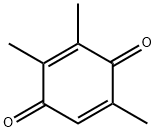
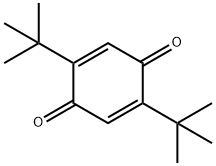

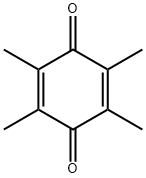

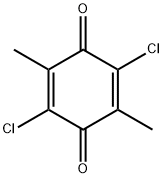
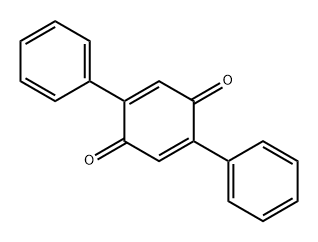
You may like
-
 p-Xyloquinone CAS 137-18-8View Details
p-Xyloquinone CAS 137-18-8View Details
137-18-8 -
 2,5-Dimethyl-1,4-benzoquinone CAS 137-18-8View Details
2,5-Dimethyl-1,4-benzoquinone CAS 137-18-8View Details
137-18-8 -
 1975-50-4 98%View Details
1975-50-4 98%View Details
1975-50-4 -
 2-HYDROXY BENZYL ALCOHOL 98%View Details
2-HYDROXY BENZYL ALCOHOL 98%View Details
90-01-7 -
 2-Chloro-1,3-Bis(Dimethylamino)Trimethinium Hexafluorophosphate 221615-75-4 98%View Details
2-Chloro-1,3-Bis(Dimethylamino)Trimethinium Hexafluorophosphate 221615-75-4 98%View Details
221615-75-4 -
 14714-50-2 (2-Hydroxyphenyl)acetonitrile 98+View Details
14714-50-2 (2-Hydroxyphenyl)acetonitrile 98+View Details
14714-50-2 -
 118753-70-1 98+View Details
118753-70-1 98+View Details
118753-70-1 -
 733039-20-8 5-broMo-2-chloro-N-cyclopentylpyriMidin-4-aMine 98+View Details
733039-20-8 5-broMo-2-chloro-N-cyclopentylpyriMidin-4-aMine 98+View Details
733039-20-8